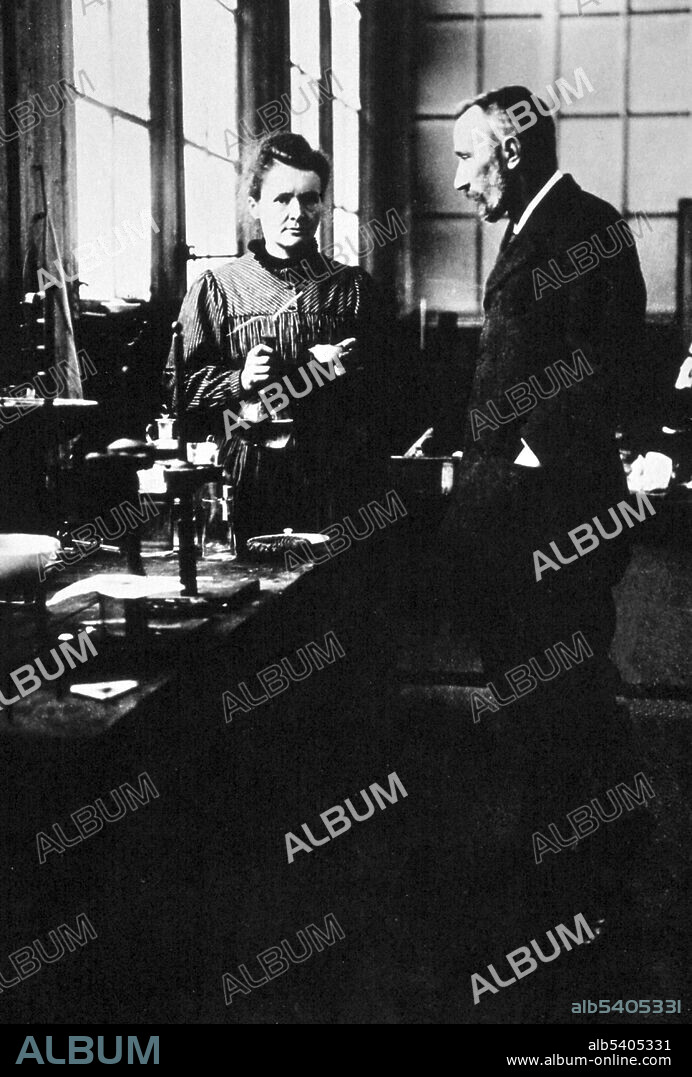alb5405331
Pierre and Marie Curie in Their Paris Lab,1900s

|
Add to another lightbox |
|
Add to another lightbox |



Buy this image.
Select the use:

Title:
Pierre and Marie Curie in Their Paris Lab,1900s
Caption:
Marie and Pierre Curie in their laboratory in Paris. Pierre Curie was introduced to Maria Sklodowska by a friend and took Maria into his laboratory as his student. He began to regard her as his muse. She refused his initial proposal, but finally agreed to marry him on July 26, 1895. Marie Curie (November 7, 1867 - July 4, 1934) was a Polish-French physicist and chemist. She was the first woman to win a Nobel Prize, the only woman to date to win in two fields, and the only person to win in multiple sciences. Her achievements included a theory of radioactivity (a term that she coined), techniques for isolating radioactive isotopes, and the discovery of two elements, polonium and radium. Pierre Curie (May 15, 1859 -April 19, 1906) was a French physicist, a pioneer in crystallography, magnetism, piezoelectricity and radioactivity, and Nobel laureate. Pierre studied ferromagnetism, paramagnetism, and diamagnetism for his doctoral thesis, and discovered the effect of temperature on paramagnetism which is now known as Curie's law. The material constant in Curie's law is known as the Curie constant. No photographer credited, circa 1900s.
Credit:
Album / Science Source
Releases:
Image size:
3043 x 4500 px | 39.2 MB
Print size:
25.8 x 38.1 cm | 10.1 x 15.0 in (300 dpi)
Keywords:
1900 • 1900S • 1990S • 20 20TH XX XXTH TWENTIETH CENTURY • 20 XX TWENTIETH CENTURY • 20TH CENTURY • 20TH • 90S • CELEBRITIES • CELEBRITY • CHEMIST • CURIE INSTITUTE • CURIE • CURIES • EUROPE • FAMOUS PEOPLE • FAMOUS • FRANCE • FRENCH • HISTORY • LAB • LABORATORIO • LABORATORY • LABORATORY; LAB • MAN • MARIE CURIE • MEDICAL RESEARCH • MEN • NINETIES • NINETIES, THE • NINETY DECADE • NOBEL PRIZE LAUREATE • NOBEL PRIZE • NOBEL • PAR IDS • PERSON • PERSONALITY • PHOTO • PHYSICIST • PIERRE CURIE • SAVANT • SCIENTIFIC • SCIENTIST • THEORY OF RADIOACTIVITY • TWENTIETH CENTURY


 Pinterest
Pinterest Twitter
Twitter Facebook
Facebook Copy link
Copy link Email
Email
